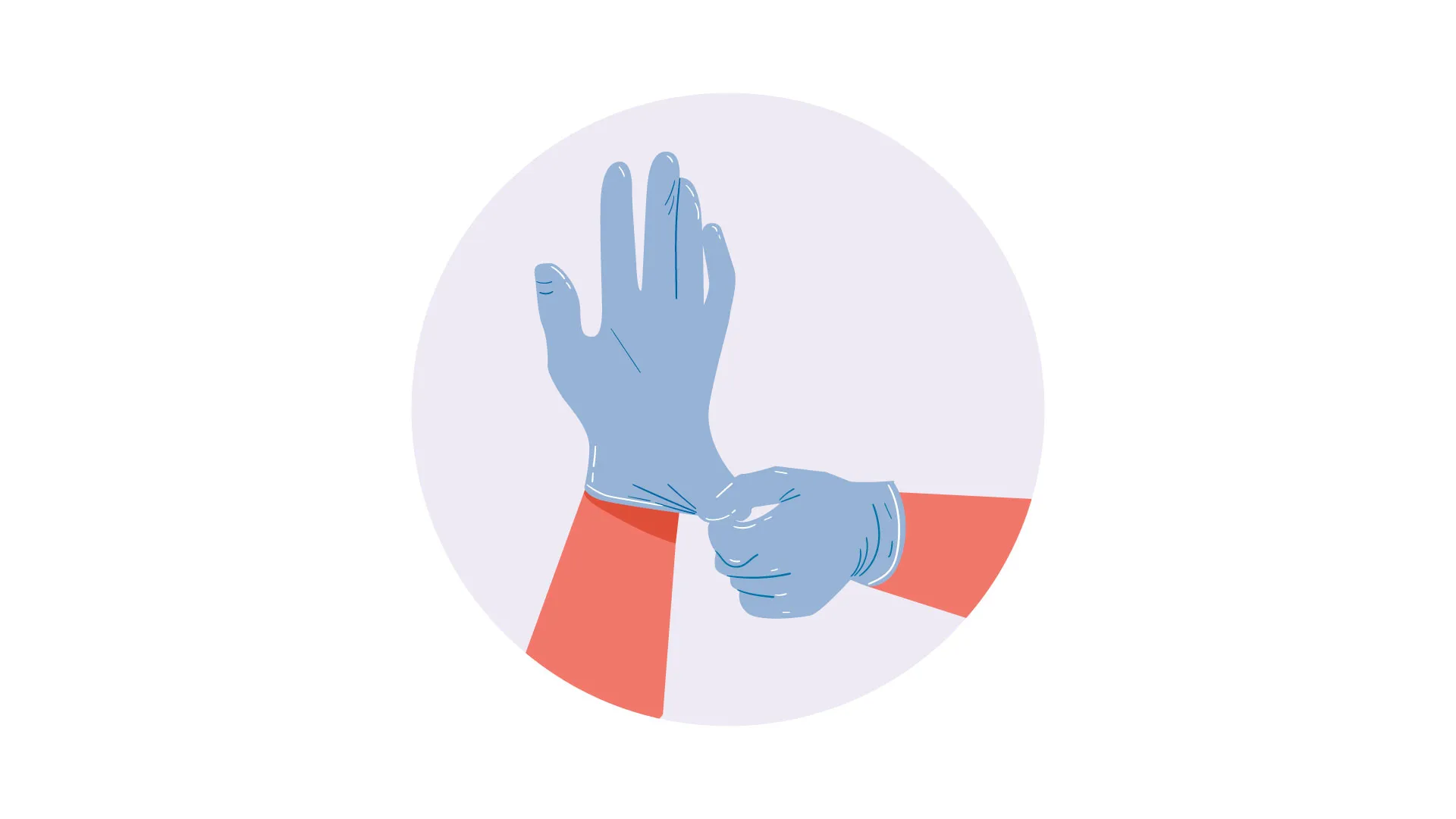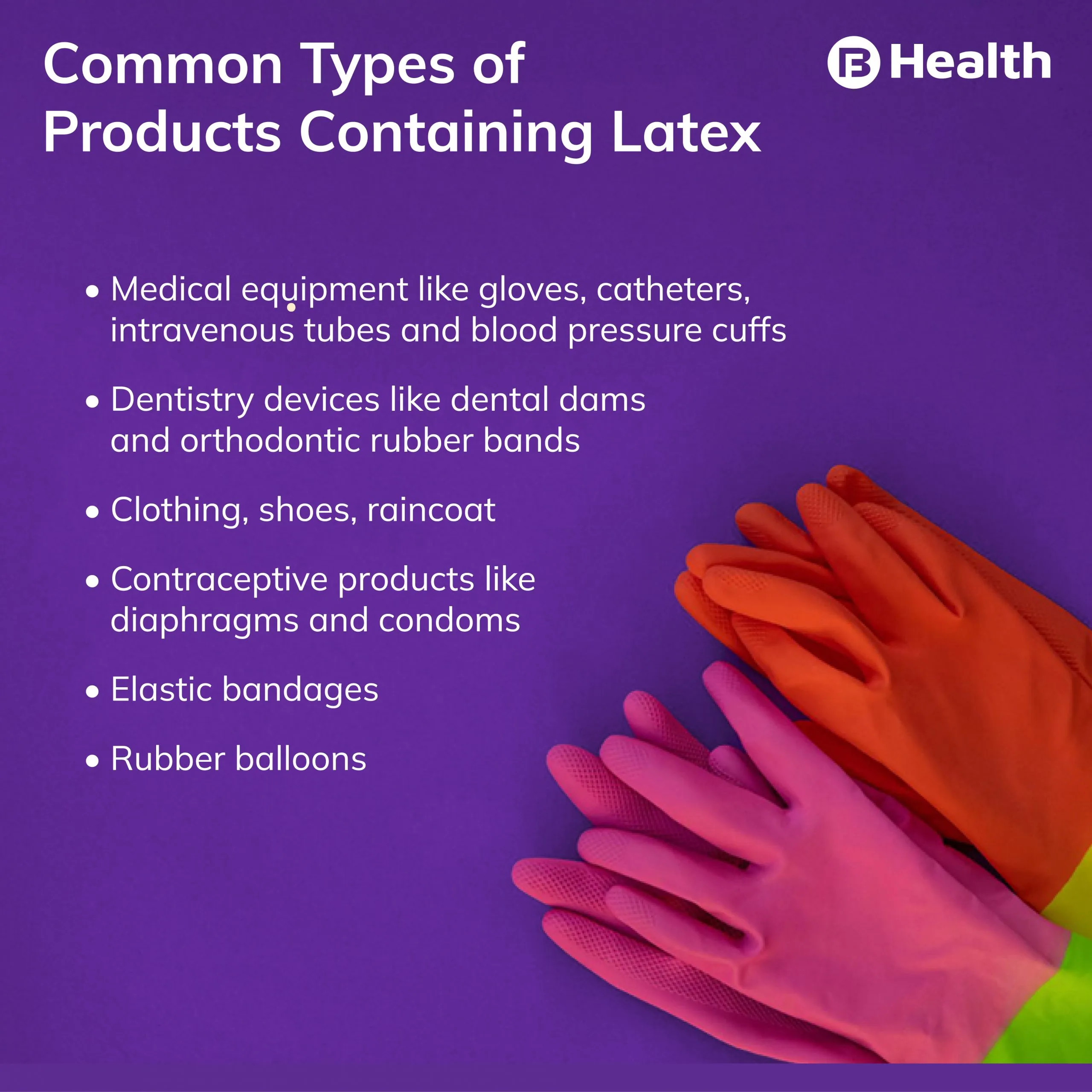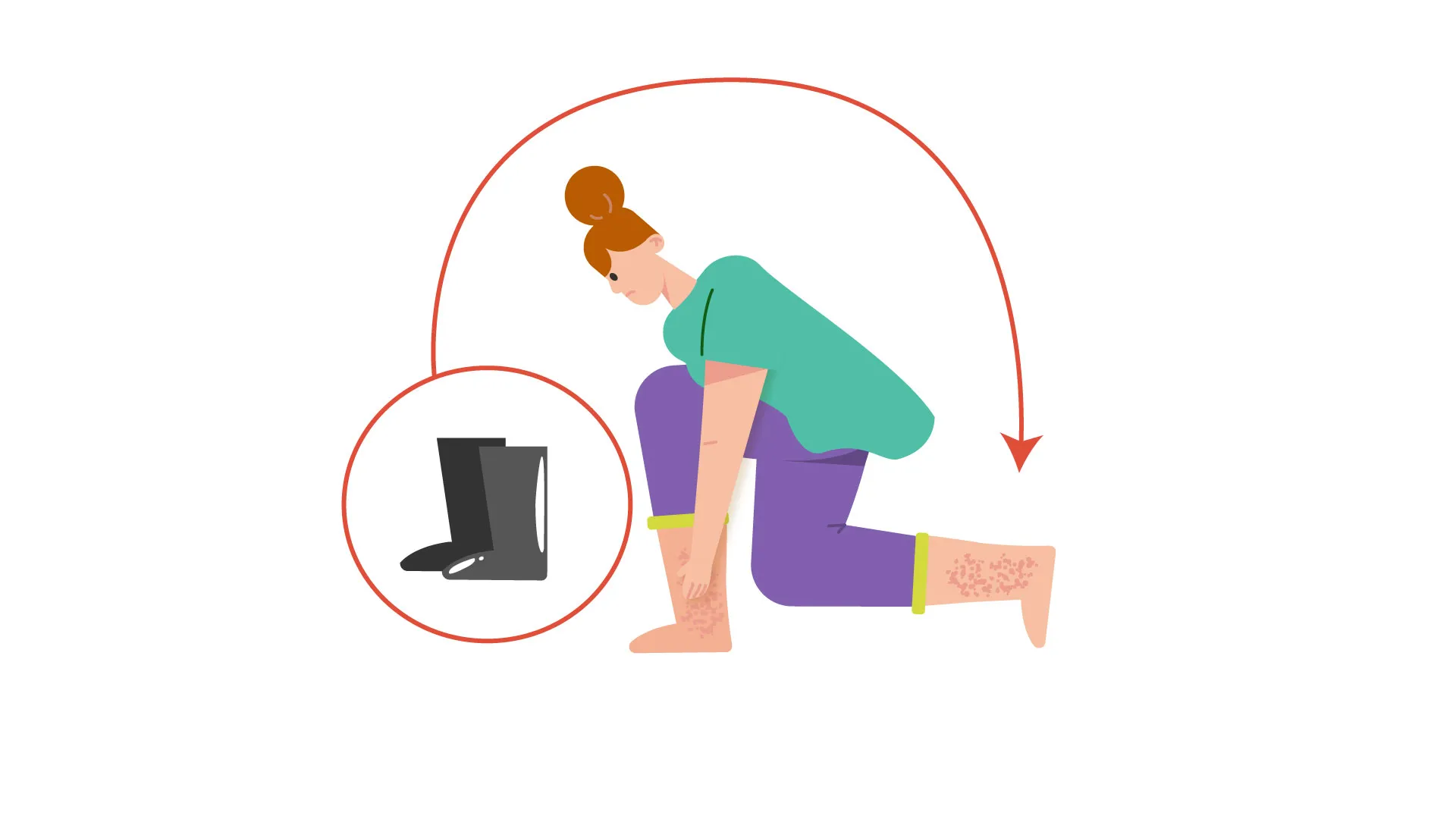Physical Medicine and Rehabilitation | 4 min read
Latex Allergy Symptoms, Diagnosis, Treatment and More
Medically reviewed by
- Table of Content
Key Takeaways
- Latex allergy is a reaction to proteins found in natural rubber latex
- Latex allergy symptoms include itchy hands, red skin rashes and eczema
- Latex allergy is diagnosed by performing skin tests recommended by doctors
Latex is harvested from rubber tree sap, and sometimes, a specific protein present in it can elicit a response from your body. This is what having a latex allergy means. Be careful about this allergy as it may not only cause unpleasant symptoms but also threaten your life in severe cases. In this case, getting latex allergy treatment immediately can help subside such latex allergy symptoms.
A latex allergy takes place when your immune system responds to a typically harmless substance as though it were an intruder, like a bacteria or virus [1]. A large group of chemicals and antibodies, which include antihistamines, are released when this happens. They react at the area of the invasion point, creating an inflammatory response. Since no latex allergy treatment is able to cure it completely as of today, prevention is better than cure.
Read on to understand the methods in which a latex allergy is diagnosed by doctors and learn about common latex allergy symptoms and latex allergy treatment options.

Latex Allergy Symptoms
Latex allergy reactions often take the form of a red rash at the point where there was contact, also known as contact dermatitis [2]. Signs of this may include:
Such symptoms are usually temporary and begin within minutes of exposure. You can use ointment or creams to soothe the red rashes that develop. Latex proteins can also, at times, become airborne. This causes a hypersensitive person to breathe them in and develop a more serious reaction called anaphylaxis. The symptoms of a severe reaction include:
- Red skin
- Weakness
- Swollen tongue or lips
- Stuffy or runny nose
- Swelling in the throat
- Abdominal pain
- Vomiting
- Breathing problems
- Diarrhea
- Dizziness
- Rapid heart rate

Types of Latex Allergy
Using latex can lead to the following three types of reactions:
- Irritant contact dermatitis: Though this condition causes symptoms like dryness, burning, itching, scaling, and other skin problems, it is not an allergic reaction to the skin. This condition is usually caused by prolonged exposure to chemicals in latex gloves. In such cases, irritation begins 12-24 hours after one comes in close contact with latex.
- Allergic contact dermatitis: The cause of this condition is similar to irritant contact dermatitis, but it leads to an extreme burning sensation and spreads to different body parts. You can start experiencing the symptoms within 1 to 4 days of coming in close contact with latex.
- Latex hypersensitivity or an immediate allergic reaction: This is the most severe reaction to using latex, which can sometimes be life-threatening. Usually, it becomes visible as a nasal allergy, accompanied by hives, conjunctivitis, hay fever symptoms, severe itching, and cramps. In rare cases, one may also experience signs like tremors, breathing difficulty, hypotension, chest pain, rapid heartbeat, or a life-threatening allergic reaction known as anaphylaxis.
Risk of Latex Allergy
People at increased for latex allergy are:
- People who have food-related allergies
- Childcare providers or those in the healthcare sector
- Hairdressers
- Children who have had or are having multiple surgeries
- Food service workers
- People who require medical procedures frequently, such as catheterization
- Housekeepers
- People who work in tire factories or in rubber manufacturing

Latex Allergy Treatment
Latex allergy is diagnosed by performing skin tests. There is no complete cure for latex allergy, so the best latex allergy treatment is prevention [3]. For mild to moderate reactions, your doctor might prescribe medications to treat the symptoms. If you have a serious level of allergy, injectable medications may be used to prevent suffocating to death. You can do the following things to reduce contact:
- Use non-latex gloves (for example, vinyl, glove liners, powder free gloves)
- Telling doctors about the latex allergy that you have
- Wearing a medical bracelet ID detailing all your allergies
Rather than thinking about the latex allergy treatment, focus on limiting your exposure as much as possible. For managing latex allergy symptoms and more information on skin problems like seborrheic keratoses treatment, athlete's foot treatment, and staph infection treatment, consult online dermatologists on Bajaj Finserv Health. With proper guidance, you can manage your skin problems effectively.
- References
- https://my.clevelandclinic.org/health/diseases/8623-latex-allergy
- https://www.cdc.gov/niosh/docs/98-113/
- https://www.mayoclinic.org/diseases-conditions/latex-allergy/diagnosis-treatment/drc-20374291
- Disclaimer
Please note that this article is solely meant for informational purposes and Bajaj Finserv Health Limited (“BFHL”) does not shoulder any responsibility of the views/advice/information expressed/given by the writer/reviewer/originator. This article should not be considered as a substitute for any medical advice, diagnosis or treatment. Always consult with your trusted physician/qualified healthcare professional to evaluate your medical condition. The above article has been reviewed by a qualified doctor and BFHL is not responsible for any damages for any information or services provided by any third party.




